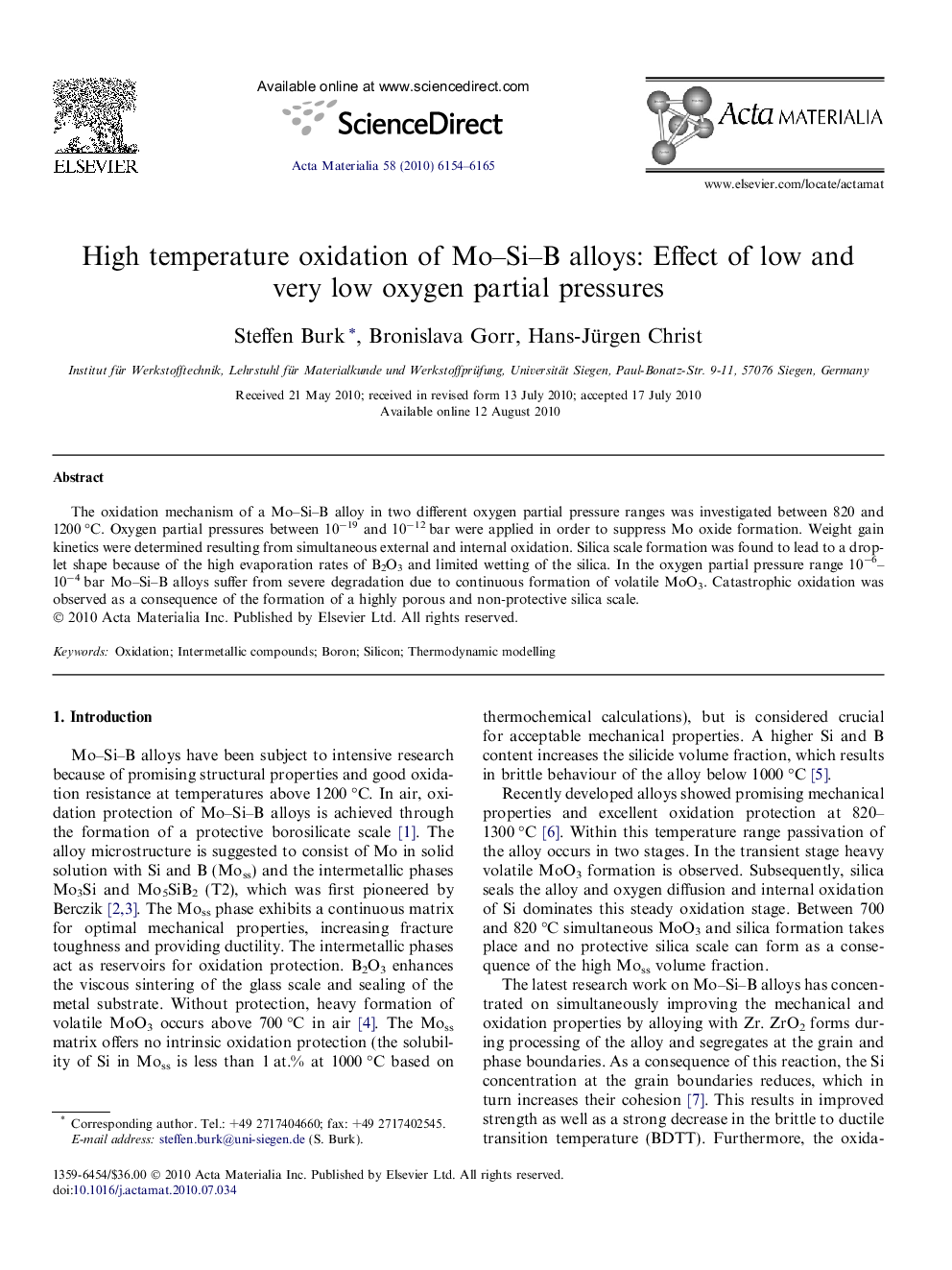| Article ID | Journal | Published Year | Pages | File Type |
|---|---|---|---|---|
| 1447590 | Acta Materialia | 2010 | 12 Pages |
Abstract
The oxidation mechanism of a Mo–Si–B alloy in two different oxygen partial pressure ranges was investigated between 820 and 1200 °C. Oxygen partial pressures between 10−19 and 10−12 bar were applied in order to suppress Mo oxide formation. Weight gain kinetics were determined resulting from simultaneous external and internal oxidation. Silica scale formation was found to lead to a droplet shape because of the high evaporation rates of B2O3 and limited wetting of the silica. In the oxygen partial pressure range 10−6–10−4 bar Mo–Si–B alloys suffer from severe degradation due to continuous formation of volatile MoO3. Catastrophic oxidation was observed as a consequence of the formation of a highly porous and non-protective silica scale.
Related Topics
Physical Sciences and Engineering
Materials Science
Ceramics and Composites
Authors
Steffen Burk, Bronislava Gorr, Hans-Jürgen Christ,
